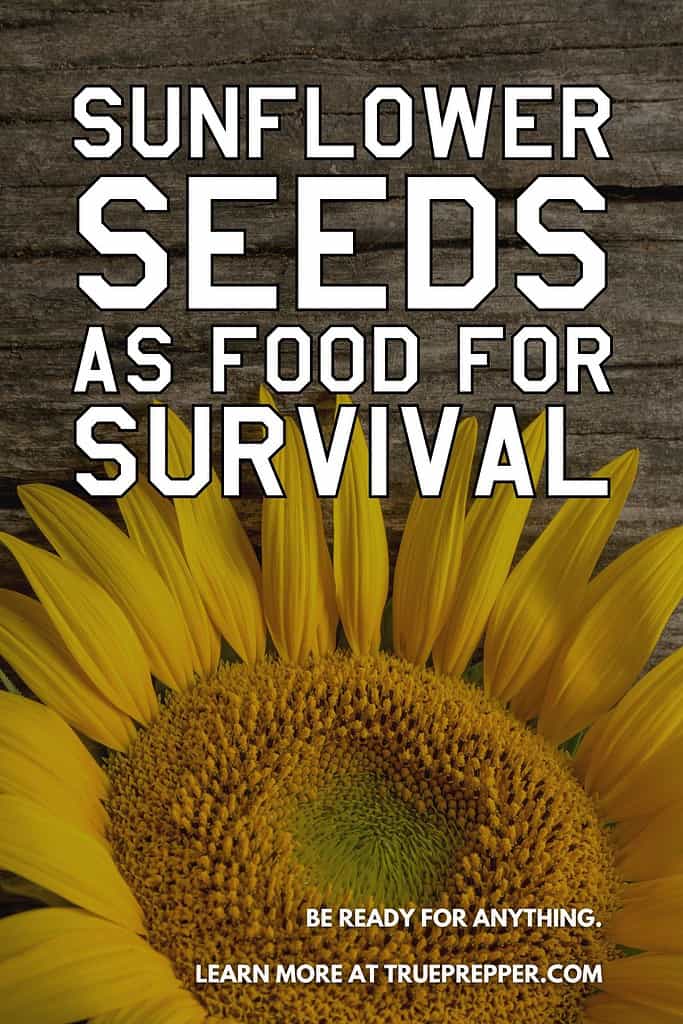
When it comes to long-term food storage and survival, renewable food sources are essential. While traditional food storage can only last for a limited time, renewable foods can provide a continuous supply of sustenance. One of the easiest and most versatile renewable food sources is the sunflower. Not only are sunflowers beautiful to look at, but they also offer a bounty of seeds that can serve as a protein source and be used to grow even more sunflowers. In this article, we will explore the various aspects of using sunflower seeds for survival and how to incorporate them into your long-term food storage plan.
Sunflower Seed Nutrition Facts
Before we delve into the specifics of using sunflower seeds for survival, let's take a look at the nutritional value they offer. Sunflower seeds are packed with essential nutrients, making them an excellent addition to any diet. They are rich in protein, healthy fats, fiber, vitamins (such as vitamin E), and minerals (such as magnesium and phosphorus). Incorporating sunflower seeds into your survival food plan can help ensure that you receive the nutrients your body needs to stay healthy and energized.
Selecting the Right Sunflower Strain
When it comes to growing sunflowers for survival, selecting the right strain is crucial. There are various types of sunflowers available, each with its own characteristics and benefits. Some strains are better suited for seed production, while others are ideal for sunflower oil extraction. Here are a few sunflower strains that are recommended for food storage:
- Mammoth Russian
- Sunzilla
- Snack Seed
- Super Snack Mix
- Black Oil (for sunflower oil)
It's important to choose strains that are known for their seed production and adaptability to your specific growing conditions. Doing so will ensure that you maximize your sunflower harvest and have an abundant supply of seeds for consumption and future planting.
Growing Sunflowers in a Survival Garden
Sunflowers are relatively easy to grow, even for those without a green thumb. They thrive in sunny environments and are drought-resistant, making them suitable for survival situations where water may be scarce. Here are some key considerations when growing sunflowers in a survival garden:
- Plant the seeds in the spring after the last frost has passed.
- Choose a location with direct sun exposure and sufficient space for the roots to grow.
- Avoid sandy soil, as it may not provide adequate support for the plants.
- Space the seeds about six inches apart and plant them one inch deep into the soil.
- Keep the soil moist while waiting for the seeds to sprout.
- Protect the plants from rodents and birds by using nets or paper bags.
By following these guidelines, you can ensure that your sunflowers thrive and produce a bountiful harvest of seeds.
Preparing Grown Sunflower Seeds to be Edible
Once your sunflowers have reached maturity, it's time to harvest and prepare the seeds for consumption. Here's a simple method for processing sunflower seeds:
- Cut the flower from the stem, leaving about 2 inches of stem attached to the flower.
- Hang the flower in a well-ventilated room to dry.
- Once the flower is dry, rub two sunflowers together with the seeds facing each other to remove the seeds from the flower.
- Alternatively, you can crack the seeds using a rolling pin and separate the hulls from the kernels by soaking them in water.
By following these steps, you can easily harvest and process sunflower seeds for consumption. Remember, sunflower seeds are a rich source of protein and can be a valuable addition to your survival food storage.
Sunflower Seed Oil
In addition to consuming sunflower seeds as a snack or ingredient, you can also extract oil from them. Sunflower seed oil is versatile and has a high smoke point, making it suitable for cooking. Here's how you can extract oil from sunflower seeds:
- Plant oilseed varieties of sunflowers alongside your regular sunflower plants.
- After harvesting the mature sunflower heads, blend the whole seeds in a blender without dehusking them.
- Strain the blend to separate the oil from the solids.
- If desired, you can cook the mashed sunflower seeds to extract even more oil.
By planting specific oilseed varieties and following these extraction methods, you can produce your own sunflower seed oil for cooking and other purposes.
Pollinating Sunflowers for Seeds
One challenge of maintaining sunflower seeds as a renewable resource is pollination. While bees and insects naturally pollinate sunflowers, indoor or restricted environments may require manual pollination. Here's how you can manually pollinate sunflowers:
- Gather pollen using a rag or other suitable tool.
- Apply the pollen to as many pistils as possible within the flower.
Since sunflowers have multiple pistils, pollination can be a time-consuming process. By manually pollinating the flowers, you can ensure a higher seed yield for future harvests.
Sunflowers Absorb Nuclear Radiation
Aside from their culinary and decorative uses, sunflowers also have unique properties when it comes to radiation absorption. Sunflowers have been used to absorb radiation from the ground in areas affected by nuclear disasters, such as Chernobyl and Fukushima. Their ability to absorb harmful radiation makes them an interesting plant to consider for survival situations—————————————————————————————————————————————————————————————–
By: Rusty Collins
Title: Sunflower Seeds as Survival Food: The Protein-Packed Flowers
Sourced From: www.trueprepper.com/sunflower-seeds-survival-food/
Published Date: Fri, 09 Feb 2024 11:14:30 +0000


